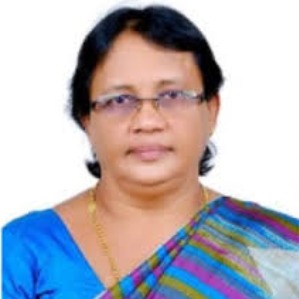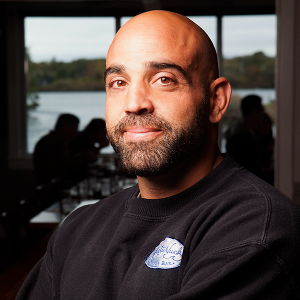Nguyen Quang Linh, Hue University, Vietnam
Lectins are carbohydrate-binding protein domains. The C-type designates a requirement and aquaculture for binding. Proteins contain C-type lectin domains with diverse functions, including cell-cell adhesion, immune response to pathogens, and apoptosis. This study aimed to investi [....] » Read More




















Title : Real time detection of free-swimming sea lice with high resolution optical sensor
Lionel Camus, Akvaplan.niva, Norway
Since 1980, the production of Norwegian farmed salmon has increased from ca. 4,000 tonnes to ca. 1.2 million tonnes. This means that the industry produces on average about 14 million salmon meals every day, throughout the year. Norway experienced an exceptional growth in salmon [....] » Read More
Title : The Danube Delta, a potential new submerged Atlantis under a Black Sea impact scenario due to global sea level rise, raises questions about the fate of regional fish species
Doru Banaduc, Lucian Blaga University of Sibiu, Romania
The Danube Delta is one of Earth’s biodiversity hotspots and includes many endemic, rare, and important species of both major conservation and economic value. This unique complex of ecosystems also plays a key role for Danube River and Black Sea fish fauna through its role [....] » Read More
Title : Sustainable, efficient alternatives to pond culture technology for finfish
Amie Sarker, University of Dallas, United States
The South Asia Fisheries Research Project (SAFRP) finfish production program was designed to explore the cost-effective production of fish in a land-based facility using advanced technology. The project was designed to 1. Maximize land and water use and use local materials and [....] » Read More
Title : 'Welcome to the hotel microbialifornia' - A six months spatial and temporal study of sea bass aquaculture tank bacterial communities
Alix Da Fonseca Ferreira, Universite du Littoral Cote d'Opale, France
Within the realm of seafood production, aquaculture is a pivotal domain, where the intricate dynamics of microbial communities bear significant ramifications for fish health and production efficiency. In aquaculture, particularly in the context of sea bass (Dicentrarchus labrax) [....] » Read More
Title : Spiny Lobster aquaculture – from aspiration to production
Greg Smith, Institute for Marine and Antarctic Studies, Australia
There are several high value marine species that until recently have only been available for harvest as a fishery product. A growing world middle-class is driving increased demand for premium seafood products. To meet market demand an integrated multidisciplinary approach is requ [....] » Read More
Title : Development of a computer vision-based device for continuous larval monitoring in commercial-scale crustacean aquaculture
Dean Giosio, University of Tasmania, Australia
This study presents the development of a novel computer vision-based device for larval monitoring in large-scale crustacean aquaculture. The device utilizes computer vision algorithms to identify and count larvae within a grow-out tank, providing continuous and real-time data for [....] » Read More
Title : How can environmental DNA transform Indian fisheries management?
Mukesh Bhendarkar, ICAR-National Institute of Abiotic Stress Management, India
India is a significant player in global fisheries and aquaculture industries, contributing to food security and economic development. However, this vital and diverse resource faces management limitations, due to an obsolete monitoring system, which, coupled with climate change im [....] » Read More
Title : It’s in the blood: Examination of point-of-care blood testing systems for rapid analysis of biomarker profile in Atlantic salmon (salmo salar)
Saad Zah, AquaPredict AS/Nord University, Norway
Objectives: To examine the performance of two readily available and affordable blood testing systems, Seamaty SMT-120VP and Mnchip Pointcare V2/V3, in analyzing blood-based biomarkers in Atlantic salmon and to determine the performance of whole blood versus plasma analysis. Me [....] » Read More
Title : “Take only photos, leave only bubbles”. Transformation of environmental ethics and scuba diving practices in Greece
Tzanakis Manolis, University of Crete, Greece
This presentation provides a historical-sociological analysis of the practices of recreational scuba diving and its relationship with fishing. Beginning with a national case study, Greece, the presentation analyzes the gradually evolving global institutional regulations of this f [....] » Read More
Title : Bacillus species as direct-fed microbial antibiotic alternatives for aquaculture development and sustainability
Shifa Abubaker Bahaddad, University of Jeddah, Saudi Arabia
Aquaculture is a rapidly expanding farming industry owing to the augmenting demand for food and the notable shortage in natural fish stocks. The aquaculture sector is providing more than 50% of the world’s fish and seafood needs for the continuously growing human population [....] » Read More
Title : Genotoxic effect of rice agrochemical on channa punctatus using MN assay and alkaline single cell gel electrophoresis
Manjeet Kaur, Govt. College Safidon, India
Rice cum fish culture is a cost effective practice for marginal and poor farmers but the major constraint of this aspect is continous and roughly use of agrochemical according to farmers on fish, Channa punctatus reared in rice fields. Present studies were therefore conducted to [....] » Read More
Title : Commercial production of elite seedlings of kappaphcus alvarezii using novel micropropagation technique
Meenakshisundaram Ganesan, CSIR-Central Salt & Marine Chemicals Research Institute, India
Kappaphycus alvarezii yields multiple products like carrageenan, biostimulant, potassium rich salt and biofilm. Commercial cultivation of K.alvarezii has been initiated along the South East Indian coast two decades ago. Initial cultivation experiments were done with perforated [....] » Read More
Title : Revisiting the ichthyological research and species checklist in the lotic systems of Arunachal Pradesh, Eastern Himalaya- A systematic review.
Junngam Khiham, Wildlife Institute of India, India
Arunachal Pradesh, being the largest state in North-east India covers 60.93% of the eastern Himalayan hotspot. It is endowed with rich networks of drainage systems with enormous fish diversity and endemicity. However, most ichthyological research on most of the river systems are [....] » Read More
Title : Assessing the changes in the fish's quality and freshness during packaging using an electronic nose, microbial growth, and a texture profile analyzer
Yasmin Hamed Ali AL Alawi, Sultan Qaboos University, Oman
Aside from the sharp drop in the aquatic food supply, post-harvest fish losses are a serious concern in most fish distribution networks worldwide. Over the years, several processes have been applied to prolong aquatic food shelf life and minimize its loss by preventing spoilage m [....] » Read More
Title : Bridging the gap: Metadata analysis and infrastructure evaluation in aquaculture research and training facilities
Nondumiso Mfenyana, South African International Maritime Institute, South Africa
Aquaculture education, research and training facilities play a pivotal role in fostering innovation, advancing knowledge, and supporting industry growth. This paper presents a comprehensive approach to evaluating and improving Aquaculture infrastructure by amalgamating findings f [....] » Read More
Title : Strengthening oyster aquaculture in the Philippines through the bamboo raft technology
Joseph Christopher C Rayos, National Fisheries Research and Development Institute, Philippines
Traditionally, oyster farming in Pangasinan involved a time-consuming process in shallow estuarine waters, resulting in relatively small harvests of 12-15 kg per square meter after seven to eight months. In a bid to enhance local oyster production and uplift the livelihoods of fi [....] » Read More